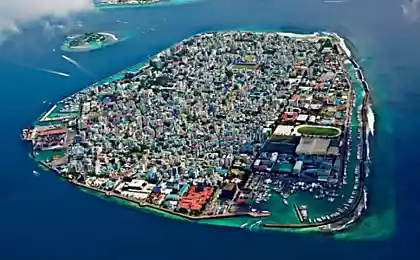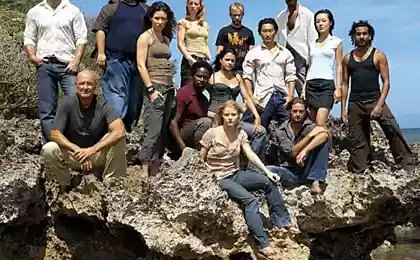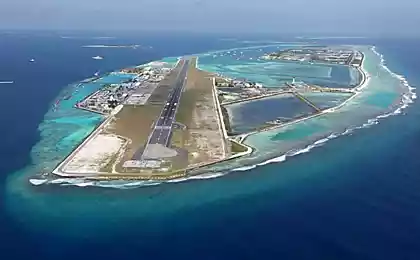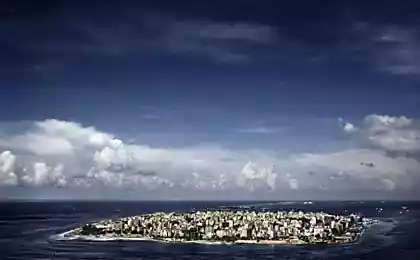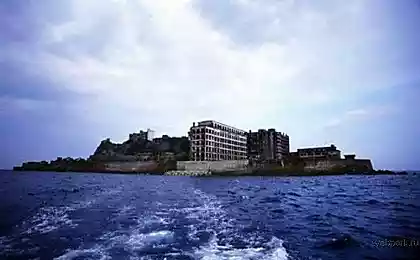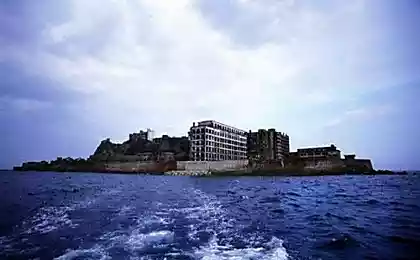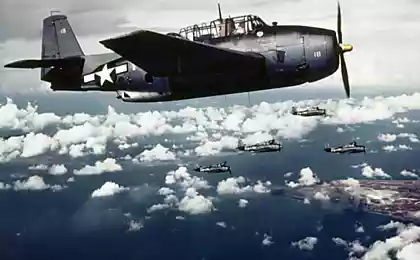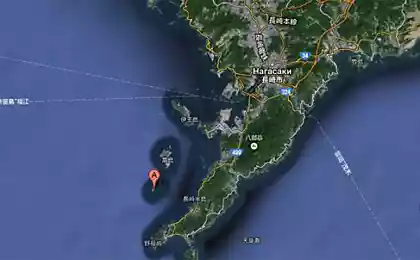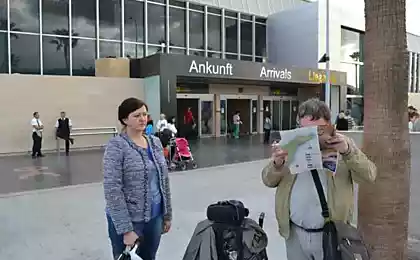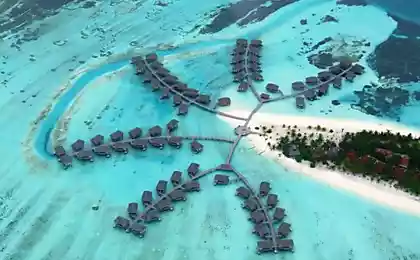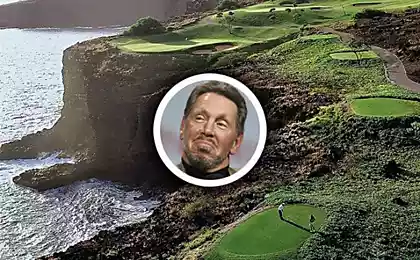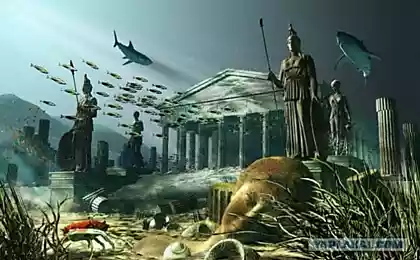231
Мале - мегаполис посреди океана
malle(pronounced Maa-Lay, the capital and largest city of the Maldives) The town of Male is located on an island in Kaafu Atoll. The population of Male is 104,400 (2006). Traditionally, Male is considered a Royal Island, from which the Maldives have been ruled by royal families since ancient times.
The name of the capital of the Maldives comes from the word "Mahaalay", which came from Sanskrit (ancient language), which means "Maha" - "big" or "great" and "aalay" - "house". In Sanskrit, the word “Mahaalay” was used to refer to the royal palace. That's how the name Male came about. And the whole group of islands of the Maldives and named thanks to the name of the capital. The word "Maldives" means "Dives Male" - Male Dives.
Male Island is only 2 kilometers long and 1 kilometer wide, completely built up with buildings, covered with roads, and therefore there are very few open places. At the same time, Male remains a clean and neat city with mosques, markets, a labyrinth of small streets, wrapped in a veil of charm. Although Male sometimes evokes the impression of a quiet provincial town, new modern buildings are being built everywhere and life is in full swing. Officially, the capital's population is about 65,000, but along with foreign workers, tourists and residents of other islands who often come here, the city usually has 100,000.
The size of the island has been doubled through land restoration projects, with nearby islands being used for different purposes, and one of the islands has an airport. The government plans to develop other islands to reduce pressure on Male. In the past, Male Island was known as Sultan Island. The capital has everything that an eastern city should have: mosques, a market, many shops with souvenirs, small cafes with exotic dishes and so on.
Right in front of the pier, opposite Jumuri Maidan, or Republican Park, is the Islamic Center, the main building of which is the Grand Mosque. Its golden domes sparkle so brightly that they can be seen from the sea as you approach Male from the north. The Grand Mosque, which can accommodate 5,000 people, is an amazing building. Its interior is decorated with wooden carvings and Arabic calligraphy, skillfully executed by local craftsmen. Remember, a mosque is a place to pray, and crowds of tourists are undesirable. If you do decide to go there, it is better to do it accompanied by a Maldivian. Visitors should dress appropriately and remain completely silent. Across the street is the Sultan Park and the National Museum.
Its exposition presents a large collection of sultans’ clothing and jewelry, Koran manuscripts and interesting pre-Islamic statues found during the archaeological excavations of Thor Heyerdahl; most of the ancient finds and stone figurines are described in his book The Mystery of the Maldives. Around Male there are about 20 mosques, some of them are just coral rooms with an iron roof. The oldest of them, Hukuru Miski, is famous for its carved stone panels. A series of panels carved in the 13th century is dedicated to the arrival of Islam in the Maldives, and the cemetery houses the tomb of Abu al-Barakat and tombstones of former sultans.
Among the unique monuments are the head of the Buddha statue from the island of Toddu, belonging to the pre-Islamic period, and a wooden panel of the XIII century, covered with ancient writings. Fruit, vegetable and wood-burning markets are never empty and are picturesque places where islanders from other atolls trade their goods. The fish market, located nearby, is initially empty while the fish are caught, and after lunch fishermen begin to flock here with their prey. Fishermen cutting and cleaning fish turned this process into an art. It is a clean and well-developed area that attracts many tourists and gives an insight into the life of a typical Maldivian fisherman.
Other attractions are the Singapore Bazaar - a cluster of shops - selling quality local crafts and Maldives and imported trinkets and souvenirs. In addition, there are shops selling electronics, marine equipment, fishing equipment and household goods for local villages. In many small tea shops you can have a snack, smoke and chat with locals.
There are no tall buildings and there are more bicycles than cars. In Male it is almost impossible to get lost, all the streets overlook three large roads. There are many hotels on the island. Each hotel has its own pleasure boat, where you can go on a cruise in the archipelago for a few days.
Entertainment in Male is just a great many. Suffice it to mention only a few of them. The most interesting thing, according to many, is the evening fishing. The staff of the boat will help you cope with the initial difficulties, and then everything will depend on your skill! The next evening you will have a barbecue dinner from the catch you caught. It will also be possible to hunt large commercial fish. Departure to such an event takes place on special boats far beyond the territory of the atolls.
It will be interesting to ride a boat with a glass bottom. Thanks to this miracle, you can make many colorful photos of the underwater world. And you can do diving yourself - scuba diving. Each hotel has a diving training center, where you will receive a special certificate at the end of the courses.
It also offers entertainment such as windsurfing, catamaran riding, canoeing, water banana, water skiing, etc. The top of the fun will be a helicopter tour. In Male you can find inexpensive hotels and diners, but nightlife is limited to tea and a few Western-style restaurants. Two cinemas show Indian and Hollywood films.
Artificial beach – this phrase may surprise in a country known for natural beaches, but the inhabitants of Male really chose an artificial beach, built on the east side of the capital. The beach is ideal for swimmers and those who do not have access to nearby islands. There you can have a snack and just relax on one of the benches overlooking the ocean. In the north of Male there is an artaxion park, there are also restaurants, cafes, shops.
Some Male restaurants are air-conditioned, others offer a more relaxed outdoor environment. The choice of cuisine is quite wide: from exquisite international menus to local versions of Asian and European dishes. Some restaurants are open in the morning, others in the afternoon. All restaurants close at 1 a.m.
Traditional teahouses are still very popular among the inhabitants of Male. Here you can try various local treats, albeit sometimes in noisy surroundings. Numerous teas are scattered throughout the island. If you are in a hurry, you really should stop there – these diners serve as fast food. Teahouses usually open early in the morning (some even at 5am) and close at 1am.
The coffeehouse is a more modern version of the Maldivian teahouse. Hdes serves a variety of snacks and fast food at low prices. Open between 8 and 9 a.m. and work non-stop until 1 a.m.
Despite the modest size of Male, a taxi in the city can be useful, especially if it rains. The cost of taxi services ranges from 15-20 rufiyah for travel to any point of the city, with a surcharge of 5 rufiyah for each piece of luggage. Taxis can be caught on the street, but in Male it is customary to call a car by calling one of the many taxi services. The ferry fare is 10 rufiyi before midnight and 20 rufiyi after midnight. If you are traveling in a large group, it is more profitable to book a separate ferry flight - its cost during the day is 250 rufiya, after midnight 350 rufiya. Pier 9, where the ferry moors to the airport, is located on the Boduthakurufaanu Magu waterfront, near the Nasandhura Palace Hotel.
There are four local airports in the country. Local airline Island Aviation operates regular flights from Male International Airport to Gan Islands in Siinu Atoll, Kadhdu in Laamu Atoll, Kaadedhdu in Gaafu Daalu Atoll and Hanimadhu in Haa Dhalu Atoll. There are no scheduled passenger and cargo ships between Male and the atolls, although maritime transport is quite frequent. You can book a seat for a seaplane and book a separate flight in Male, at the airport or while at the resort.
Doni motor boats are only convenient for short-distance travel, mainly because of their slowness. They are ideal for diving trips. In Male, there are several companies that lease high-speed boats and doni boats.
The official currency is the Rufia. One rufia equals 100 laari. In circulation are banknotes in denominations of 500, 100, 50, 20, 10 and 5 rufia and coins in denominations of 1 and 2 rufia and 50, 25, 10, 5, 2 and 1 laari. The exchange rate according to the data for December 2004 is 12.75 rufiyah for 1 US dollar. All resorts, hotels, large shops and restaurants have permission to provide currency exchange services and accept currency units of many countries, as well as credit cards. The Bank of Maldives, located at the arrival terminal of the international airport, also provides currency exchange services. If you need rufias during your stay in Male, you can always contact one of the local banks.
The Bank of Maldives has several branches in Malé. Its branches are also located on the atolls of Siinu (Hithadhoo Island), Xaa Dhalu (Kulhudhufushi Island) and Laviani (Naifaru Island). The bank is also located at Male International Airport. Other banks with offices in Male include HSBC, State Bank of India, Bank of Ceylon and Habib Bank. Most banks with offices in Male offer automated cash machines (ATMs). ATMs of The Bank of Maldives and other banks are conveniently located and service the most common credit cards.
Telephone and mobile services in the country are provided by the Maldivian telecommunications company Diraagu. GSM mobile services are provided by two operators – Diraagu and Wataniyya Telecoms. Both prepayment and payment of services are possible. There is international mobile communication (roaming).
Internet cafes can be found in different parts of the city. Internet services are provided by two providers holding a state license.
Maldives Post Limited provides EMS regular and express mail services. Most international courier services have offices in Male.
Male is the shopping center of the country with a considerable selection of shops that meet the needs of 100,000 residents and thousands of buyers arriving from the islands. Small shops on the outskirts of the capital can receive visitors as early as 6-7 am, while on the main streets shops open about 9-10 hours. All shops close at 11 p.m., as well as for short 15-minute prayer breaks.
The northern part of Chaandhanee Magu is known for its collection of souvenir shops, although similar ones are found elsewhere in the city. Buyers are offered products by local craftsmen, t-shirts, batiks and a wide range of books about the Maldives in different languages.
In Male, there are several bookstores and loops of stationery. They sell mainly textbooks, fiction and scientific literature, translated books for children of famous international publications.
Source: /users/42
The name of the capital of the Maldives comes from the word "Mahaalay", which came from Sanskrit (ancient language), which means "Maha" - "big" or "great" and "aalay" - "house". In Sanskrit, the word “Mahaalay” was used to refer to the royal palace. That's how the name Male came about. And the whole group of islands of the Maldives and named thanks to the name of the capital. The word "Maldives" means "Dives Male" - Male Dives.
Male Island is only 2 kilometers long and 1 kilometer wide, completely built up with buildings, covered with roads, and therefore there are very few open places. At the same time, Male remains a clean and neat city with mosques, markets, a labyrinth of small streets, wrapped in a veil of charm. Although Male sometimes evokes the impression of a quiet provincial town, new modern buildings are being built everywhere and life is in full swing. Officially, the capital's population is about 65,000, but along with foreign workers, tourists and residents of other islands who often come here, the city usually has 100,000.
The size of the island has been doubled through land restoration projects, with nearby islands being used for different purposes, and one of the islands has an airport. The government plans to develop other islands to reduce pressure on Male. In the past, Male Island was known as Sultan Island. The capital has everything that an eastern city should have: mosques, a market, many shops with souvenirs, small cafes with exotic dishes and so on.
Right in front of the pier, opposite Jumuri Maidan, or Republican Park, is the Islamic Center, the main building of which is the Grand Mosque. Its golden domes sparkle so brightly that they can be seen from the sea as you approach Male from the north. The Grand Mosque, which can accommodate 5,000 people, is an amazing building. Its interior is decorated with wooden carvings and Arabic calligraphy, skillfully executed by local craftsmen. Remember, a mosque is a place to pray, and crowds of tourists are undesirable. If you do decide to go there, it is better to do it accompanied by a Maldivian. Visitors should dress appropriately and remain completely silent. Across the street is the Sultan Park and the National Museum.
Its exposition presents a large collection of sultans’ clothing and jewelry, Koran manuscripts and interesting pre-Islamic statues found during the archaeological excavations of Thor Heyerdahl; most of the ancient finds and stone figurines are described in his book The Mystery of the Maldives. Around Male there are about 20 mosques, some of them are just coral rooms with an iron roof. The oldest of them, Hukuru Miski, is famous for its carved stone panels. A series of panels carved in the 13th century is dedicated to the arrival of Islam in the Maldives, and the cemetery houses the tomb of Abu al-Barakat and tombstones of former sultans.
Among the unique monuments are the head of the Buddha statue from the island of Toddu, belonging to the pre-Islamic period, and a wooden panel of the XIII century, covered with ancient writings. Fruit, vegetable and wood-burning markets are never empty and are picturesque places where islanders from other atolls trade their goods. The fish market, located nearby, is initially empty while the fish are caught, and after lunch fishermen begin to flock here with their prey. Fishermen cutting and cleaning fish turned this process into an art. It is a clean and well-developed area that attracts many tourists and gives an insight into the life of a typical Maldivian fisherman.
Other attractions are the Singapore Bazaar - a cluster of shops - selling quality local crafts and Maldives and imported trinkets and souvenirs. In addition, there are shops selling electronics, marine equipment, fishing equipment and household goods for local villages. In many small tea shops you can have a snack, smoke and chat with locals.
There are no tall buildings and there are more bicycles than cars. In Male it is almost impossible to get lost, all the streets overlook three large roads. There are many hotels on the island. Each hotel has its own pleasure boat, where you can go on a cruise in the archipelago for a few days.
Entertainment in Male is just a great many. Suffice it to mention only a few of them. The most interesting thing, according to many, is the evening fishing. The staff of the boat will help you cope with the initial difficulties, and then everything will depend on your skill! The next evening you will have a barbecue dinner from the catch you caught. It will also be possible to hunt large commercial fish. Departure to such an event takes place on special boats far beyond the territory of the atolls.
It will be interesting to ride a boat with a glass bottom. Thanks to this miracle, you can make many colorful photos of the underwater world. And you can do diving yourself - scuba diving. Each hotel has a diving training center, where you will receive a special certificate at the end of the courses.
It also offers entertainment such as windsurfing, catamaran riding, canoeing, water banana, water skiing, etc. The top of the fun will be a helicopter tour. In Male you can find inexpensive hotels and diners, but nightlife is limited to tea and a few Western-style restaurants. Two cinemas show Indian and Hollywood films.
Artificial beach – this phrase may surprise in a country known for natural beaches, but the inhabitants of Male really chose an artificial beach, built on the east side of the capital. The beach is ideal for swimmers and those who do not have access to nearby islands. There you can have a snack and just relax on one of the benches overlooking the ocean. In the north of Male there is an artaxion park, there are also restaurants, cafes, shops.
Some Male restaurants are air-conditioned, others offer a more relaxed outdoor environment. The choice of cuisine is quite wide: from exquisite international menus to local versions of Asian and European dishes. Some restaurants are open in the morning, others in the afternoon. All restaurants close at 1 a.m.
Traditional teahouses are still very popular among the inhabitants of Male. Here you can try various local treats, albeit sometimes in noisy surroundings. Numerous teas are scattered throughout the island. If you are in a hurry, you really should stop there – these diners serve as fast food. Teahouses usually open early in the morning (some even at 5am) and close at 1am.
The coffeehouse is a more modern version of the Maldivian teahouse. Hdes serves a variety of snacks and fast food at low prices. Open between 8 and 9 a.m. and work non-stop until 1 a.m.
Despite the modest size of Male, a taxi in the city can be useful, especially if it rains. The cost of taxi services ranges from 15-20 rufiyah for travel to any point of the city, with a surcharge of 5 rufiyah for each piece of luggage. Taxis can be caught on the street, but in Male it is customary to call a car by calling one of the many taxi services. The ferry fare is 10 rufiyi before midnight and 20 rufiyi after midnight. If you are traveling in a large group, it is more profitable to book a separate ferry flight - its cost during the day is 250 rufiya, after midnight 350 rufiya. Pier 9, where the ferry moors to the airport, is located on the Boduthakurufaanu Magu waterfront, near the Nasandhura Palace Hotel.
There are four local airports in the country. Local airline Island Aviation operates regular flights from Male International Airport to Gan Islands in Siinu Atoll, Kadhdu in Laamu Atoll, Kaadedhdu in Gaafu Daalu Atoll and Hanimadhu in Haa Dhalu Atoll. There are no scheduled passenger and cargo ships between Male and the atolls, although maritime transport is quite frequent. You can book a seat for a seaplane and book a separate flight in Male, at the airport or while at the resort.
Doni motor boats are only convenient for short-distance travel, mainly because of their slowness. They are ideal for diving trips. In Male, there are several companies that lease high-speed boats and doni boats.
The official currency is the Rufia. One rufia equals 100 laari. In circulation are banknotes in denominations of 500, 100, 50, 20, 10 and 5 rufia and coins in denominations of 1 and 2 rufia and 50, 25, 10, 5, 2 and 1 laari. The exchange rate according to the data for December 2004 is 12.75 rufiyah for 1 US dollar. All resorts, hotels, large shops and restaurants have permission to provide currency exchange services and accept currency units of many countries, as well as credit cards. The Bank of Maldives, located at the arrival terminal of the international airport, also provides currency exchange services. If you need rufias during your stay in Male, you can always contact one of the local banks.
The Bank of Maldives has several branches in Malé. Its branches are also located on the atolls of Siinu (Hithadhoo Island), Xaa Dhalu (Kulhudhufushi Island) and Laviani (Naifaru Island). The bank is also located at Male International Airport. Other banks with offices in Male include HSBC, State Bank of India, Bank of Ceylon and Habib Bank. Most banks with offices in Male offer automated cash machines (ATMs). ATMs of The Bank of Maldives and other banks are conveniently located and service the most common credit cards.
Telephone and mobile services in the country are provided by the Maldivian telecommunications company Diraagu. GSM mobile services are provided by two operators – Diraagu and Wataniyya Telecoms. Both prepayment and payment of services are possible. There is international mobile communication (roaming).
Internet cafes can be found in different parts of the city. Internet services are provided by two providers holding a state license.
Maldives Post Limited provides EMS regular and express mail services. Most international courier services have offices in Male.
Male is the shopping center of the country with a considerable selection of shops that meet the needs of 100,000 residents and thousands of buyers arriving from the islands. Small shops on the outskirts of the capital can receive visitors as early as 6-7 am, while on the main streets shops open about 9-10 hours. All shops close at 11 p.m., as well as for short 15-minute prayer breaks.
The northern part of Chaandhanee Magu is known for its collection of souvenir shops, although similar ones are found elsewhere in the city. Buyers are offered products by local craftsmen, t-shirts, batiks and a wide range of books about the Maldives in different languages.
In Male, there are several bookstores and loops of stationery. They sell mainly textbooks, fiction and scientific literature, translated books for children of famous international publications.
Source: /users/42
